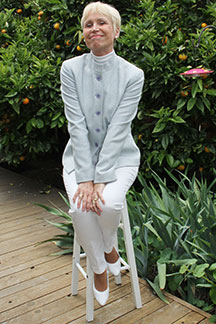The Brandenburg Gate–Brandenburger Tor–is Berlin’s most famous landmark. During its 200+ year history it has been a city symbol under many different regimes. At different times in its history, it has symbolized peace, division, and freedom and unity. Between 1961 and 1989, when the Berlin Wall divided East and West Berlin, visitors often climbed onto an observation platform adjacent to the Brandenburg Gate to get a glimpse of the world behind the Iron Curtain.
The Quadriga
Atop the Brandenburg Gate stands the sculpture of a chariot. It is pulled by four horses and driven by a goddess. The goddess was originally said to symbolize a courier of peace. Later it was reinterpreted to represent Victoria, the Roman Goddess of Victory. The Quadriga spent the years from 1806 to 1814 in Paris, France.
Brandenburg Gate History
The Brandenburg Gate witnessed many important events in German History:
1730s–Originally, the gate was one of 18 gates within the customs walls that once formed the entrance to Berlin.
1788-1791– King Friedrich Wilhelm II commissioned Carl Gotthard Langhans to rebuild the old city gate in the shape of the triumphal arch we see today. The design was inspired by the Propylaea, the Gateway to the Acropolis in Athens. Hence, Berlin has often been called “Spree Athen” (Athens on the River Spree).
1793–The Quadriga is erected on top of the Brandenburg Gate. (The goddess is said to represent a courier of peace.)
1806– After the French Army defeated the Prussians, Napoleon removed the Quadriga and carted off his spoils to Paris.
1814–The Prussian Army defeated Napoleon, occupied Paris and returned the Quadriga to Berlin. Afterwards, the monument was redesigned as a triumphal arch. The oak wreath on the goddess’ scepter was replaced with an iron cross and the Prussian eagle. (The goddess was reinterpreted to represent the Roman Goddess of Victory.)
1933–The National Socialists marched through the Brandenburg Gate in a martial torch parade and introduced Germany’s darkest chapter in history.
1945–The neoclassical sandstone arch suffered considerable damage during World War II. Berlin was divided into four sectors, and the Brandenburg Gate was now located just inside the Soviet Sector. But vehicles and pedestrians continued to travel freely through the gate.
1961– The Berlin Wall was erected in an arc just west of the gate, cutting off access from West Berlin. On the eastern side, a “border marker” cordoned off the Brandenburg Gate for East Berliners. On 13 August–the day construction of the Berlin Wall began–one crossing remained open on the eastern side of the gate. When West Berliners demonstrated against the Wall the following day, the East closed the only remaining checkpoint at the Brandenburg Gate. Traffic did not reopen until 1989.
1987–US President Ronald Regan spoke the historic words at the gate, “Mr. Gorbachev, tear down this Wall!”
1989–When the Brandenburg Gate opened again to traffic upon reunification, 100,000 people came to celebrate the occasion.
1994–U.S. President Bill “Clinton spoke at the gate about peace in post-Cold War Europe.
2000-2002–The Brandenburg Gate was restored to its former glory.
2013–U.S. President Barack Obama spoke at the Brandenburg Gate about nuclear arms reduction and U.S. Internet surveillance activities.
For a sneak peek at the first 20+ pages of my memoir, Walled-In: A West Berlin Girl’s Journey to Freedom, click “Download a free excerpt” on my home page and feel free to follow my blog about anything German: historic or current events, people, places or food.
Walled-In is my story of growing up in Berlin during the Cold War. Juxtaposing the events that engulfed Berlin during the Berlin Blockade, the Berlin Airlift, the Berlin Wall and Kennedy’s Berlin visit with the struggle against my equally insurmountable parental walls, Walled-In is about freedom vs. conformity, conflict vs. harmony, domination vs. submission, loyalty vs. betrayal.















